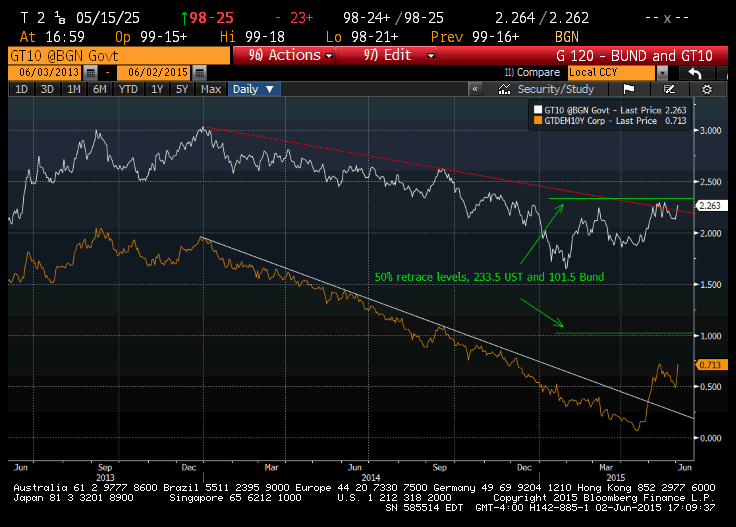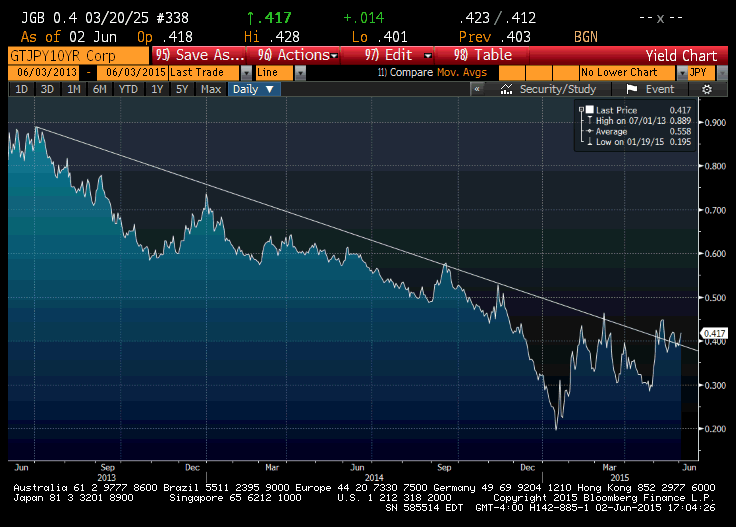On April 21, 2015 Janus’ Bill Gross called German Bunds the “short of a lifetime”. Since then, the ten year bund yield moved from a low of 7.5 bps to 71 as of Tuesday. The US Ten Yr treasury has also seen a yield increase, from a low of 164 early in the year to 226 on Tuesday. Both of these yields have broken through downward sloping trend lines which began at the start of 2014. The UST is close to its 50% retracement level which is 233.5. In bunds, it’s a bit farther away, at 101.5 bps.

On Tuesday morning, Eurozone CPI came out higher than expected, +0.3 versus expected +0.2 and yoy core CPI at +0.9 versus +0.7 expected. This data contributed to a jump of 17 bps in the German bund yield in one day. France also rose 16 bps and Italy 15 bps.
But it’s not only the US and Europe where yields appear to be breaking out to the upside. Below is the chart of the Japanese Govt Bond (JGB). Japan, which labors under a massive debt to GDP ratio of over 220% has seen its yield double from 20 bps to 41.7 bps on Tuesday.

The fundamental arguments for yields remaining low are well known. Inflation expectations are under control. Labor markets probably have more slack than official data indicate. There is a pool of global capital that requires long dated assets that throw off a stream of income. However, at least in the US, there is heavy corporate debt issuance which is continuing in 2015 after total corporate debt hit a record $7.4 trillion at the end of 2014. Apple is considering a yen denominated bond sale of 200 billion yen, or $1.6 billion USD.
So, corporate debt issuance is somewhat of a counterweight to the low yield story , at least in the US. But more may be at work: first, there have been some inflation sparks, as Tuesday’s Eurozone data suggests, and second, the faith of big investors in bond markets may be fracturing due to a loss of confidence in central banks. I have often said that the market tests new Federal Reserve Chairs. In 1987, it was the stock crash just shortly after Greenspan took the reins. For Bernanke it was the great financial crisis (Bernanke became Fed chair in February 2006). For Yellen, it may be an unravelling of global bond markets.
Perhaps, this is just a temporary yield increase that fades back. But the charts are suggesting higher yields ahead, globally. Sometimes the reasons don’t become clear until well after the move has begun. Just be aware that higher long end yields, if they materialize, will have negative knock-on effects across many asset values.




